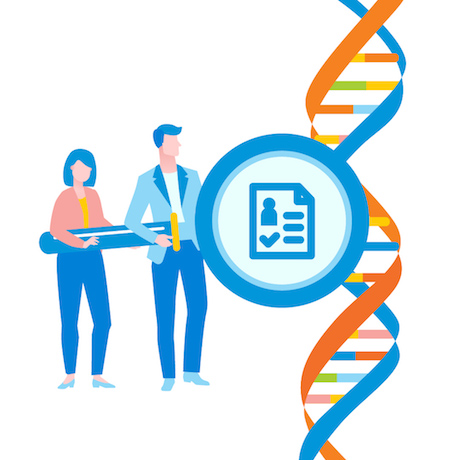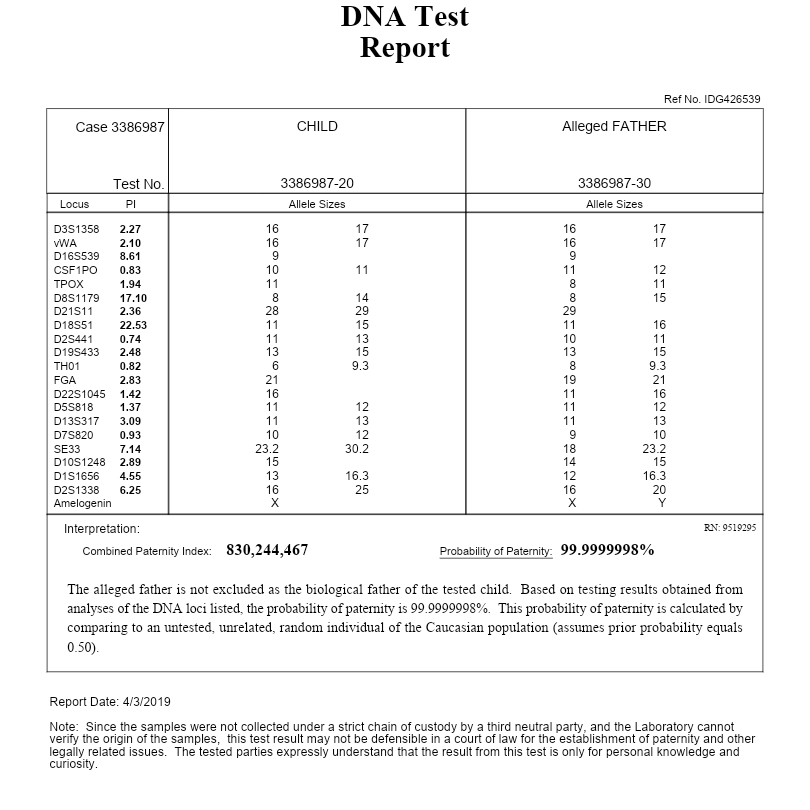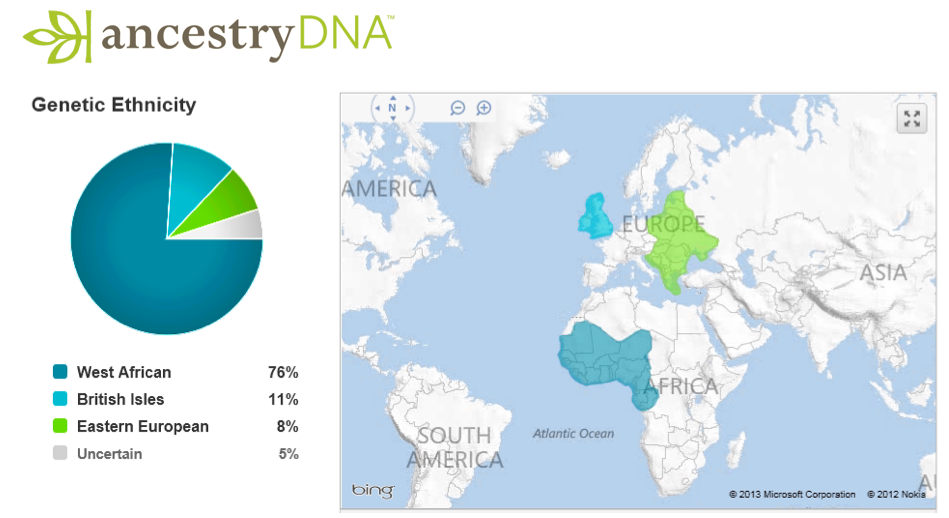
By Dr. Brandon Colby MD, a medical expert in the fields of genetic testing and personalized medicine.
After taking a DNA test, you may be anxious to receive the test results. DNA testing can reveal a lot about yourself that can surprise you, so it makes sense that you’d be excited about what your DNA sample holds.
Before you dive into your DNA report, it’s important to know what to expect so you’re not overwhelmed or confused.
What Does a DNA Report Look Like? It Depends.
When answering the question about what does a DNA report looks like, it’s crucial to know what is being tested. For example, a DNA report that identifies whether someone is the biological father of a child. This DNA paternity test will show a percentage of how likely the alleged father is related to the child’s DNA. All of this is possible with a simple cheek swab with a Q-tip, which is then placed in a test tube to be sent to the lab.
Learn More: How Does DNA Testing Work
Paternity test results are quite easy to read. It will show a DNA profile and then the probability of paternity. The biological father of the child can trust the results as they are highly accurate.

The above is an example of a paternity test. The interpretation on the bottom "Combined Paternity Index" and "Probability of Paternity" show that the DNA sample of the alleged father is a genetic match to the child based on alleles.
Paternity testing has one type of report, but there are also others, such as ancestry test reports. These reports, like the ones provided by 23andMe and AncestryDNA will show where a person’s ancestors were located and ethnic group. For instance, someone may receive a DNA report that shows someone’s genes match those who are European from France, Spain, and Germany. This can help people reveal information about their ethnicity and family history to create a family tree.

The above DNA analysis shows the person's ethnic group consists of West African, British Isles, and Eastern European.
Genetic testing can also shed light on potential health issues. Inherited diseases can be identified by looking at allele mutation. Each person receives an allele from each parent. Mutations can lead to certain conditions. Analyzing DNA data can help people prevent serious health concerns in the future with preventative medicine.
A DNA analysis not only shares conditions someone may suffer from but if there's a possibility an offspring may suffer from a health concern. Knowing if a parent is carrier status for a disease can lead to preventative measures for a child. The image below is an example of a parent who doesn't suffer from a health condition BUT carries the gene for it, so the child may suffer from it.

FAQ About DNA Test Results vs. DNA Analysis
There is a difference between a DNA test report and a DNA analysis. A DNA test simply shares DNA data with individuals. This information may not make much sense because it’s just a string of letters and numbers. By taking these numbers and letters and analyzing them for DNA matches, people can derive genetic information from it. Genetic markers can show the likelihood someone may suffer from a health condition such as breast cancer, especially when other family members have suffered from it.
Learn More: A Guide To DNA Tests
How to Get Your Own DNA Report
Now that you have a better idea of what a DNA report will look like, it’s time to get your very own with a home DNA test kit. There’s no need to head to the drugstore or have the doctor use a blood test for DNA analysis. You can simply take a DNA test in the comfort of your home and receive conclusive results. Order a DNA test kit here, and then use any of the apps we have available to analyze the DNA raw data.
About The Author
Dr. Brandon Colby MD is a US physician specializing in the personalized prevention of disease through the use of genomic technologies. He's an expert in genetic testing, genetic analysis, and precision medicine. Dr. Colby is also the Founder of Sequencing.com and the author of Outsmart Your Genes.
Dr. Colby holds an MD from the Mount Sinai School of Medicine, an MBA from Stanford University's Graduate School of Business, and a degree in Genetics with Honors from the University of Michigan. He is an Affiliate Specialist of the American College of Medical Genetics and Genomics (ACMG), an Associate of the American College of Preventive Medicine (ACPM), and a member of the National Society of Genetic Counselors (NSGC).